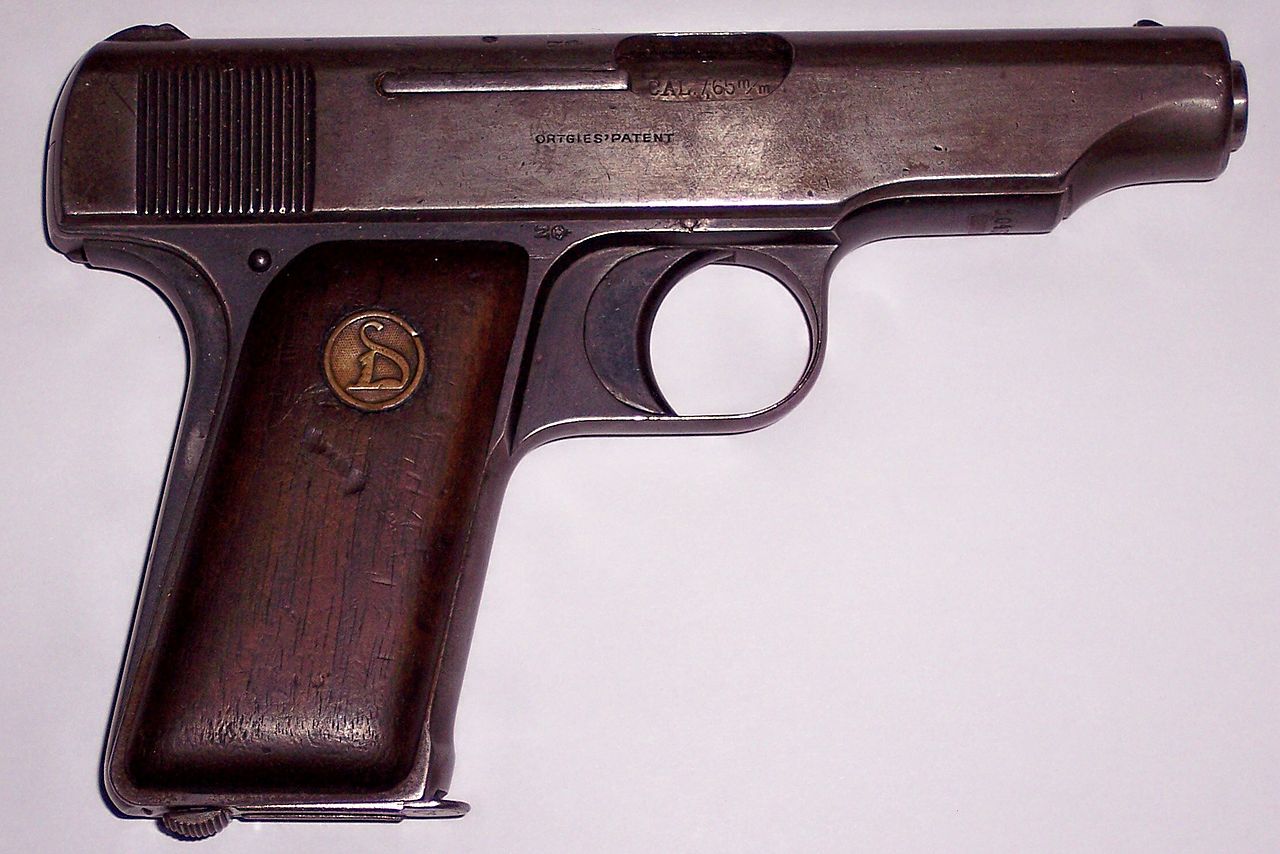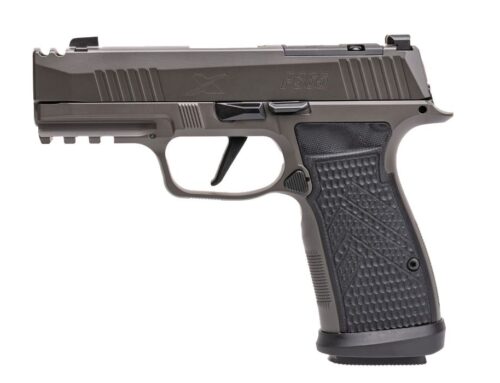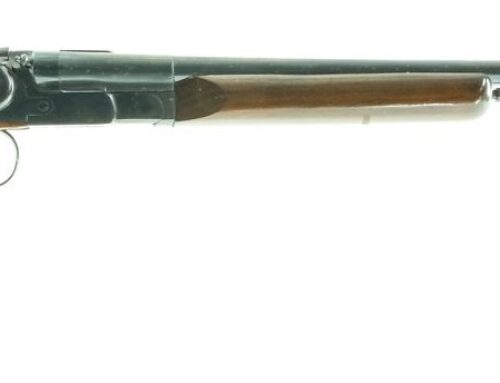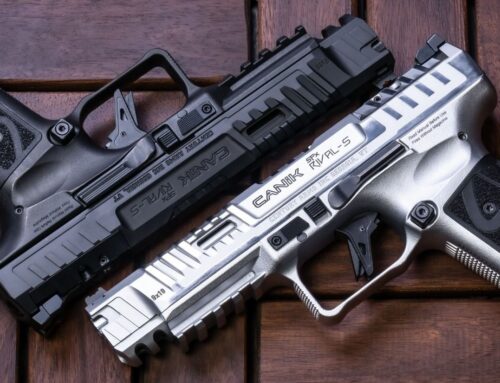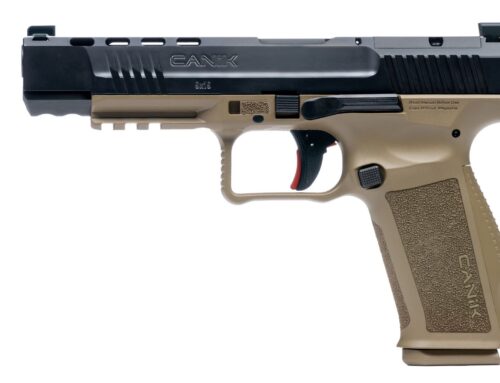Here’s a story about a slick little pocket pistol which I had previously never known about. Produced in Germany by a man named Heinrich Ortgies, these self-named pistols saw a very limited production for around five years between 1919 and 1924 and have some curious design elements. Since this is a firearm which I knew absolutely nothing about I will be relying heavily on Wikipedia for its history.
Technically the Ortgies is a cost effective design which doesn’t sacrifice quality, something which would later be proven as these pistols had notable success with shooting competitions. I am fortunate enough to have seen the original manual where they boast about their pistol’s success. To quote, “…all principal German Pistol Shooting Competitions during 1921 our Cal 7,65 (32) has won more than 70% of the prizes and at the Champion Shooting Competition at Halensee on September 26th the Champion Mr. Janich used the Ortgies Pistol.” They were also popular exports throughout the Americas.
Heinrich Ortgies had first designed and manufactured the pistol in his own factory in 1919 but died later in the same year. Eventually the design was passed to Deutsche Werke, a ship building company based in Berlin. These pistols came with several different markings on the slide but as far as I can tell they were never given any specific model names other than simply “Ortgies”. Over time the brass grip medallions also changed with the later versions being a stylized “D” which, if you look closely, is made to look like a cat. I’m not sure what the origin of this cat is but I feel that it adds to the pistol’s curious design.
The Ortgies is a striker fired pistol which has been made in a way which uses no screws at all, nothing which could snag or back out over time. Some later models did end up seeing a grip screw in order to overcome one of the weaker points in the design, however. Metal parts are either forged or machined and the exterior finish is flawless, good examples of this pistol show beautiful mirrored bluing and perfectly machined lines. All of the parts fit together with little to no play with very smooth function all around.
One neat trick of the Ortgies is that the larger framed pistols could be converted between .32 and .380. Simply field strip the firearm then rotate the barrel a quarter turn to the left to remove it from the frame.
Operation is simple blowback with the recoil spring surrounding the barrel. The larger model was chambered in 7.65×17, or .32 ACP, and 9×17 Browning, or .380 ACP. The factory magazine could accommodate both calibers with earlier examples having independent stampings on the left and right. This .32 example only states “Cal 7,65” on the baseplate. Capacity for the .32 model is 8 rounds. I’m not sure if the bump up to .380 lowered the capacity by a round or not.
Later a smaller “vest” style Ortgies came to market chambered in 6.35×16, or .25 ACP.
Factory finishes were most frequently blued with a few rare examples offered in either matte or polished nickel. Occasionally used examples will pop up with chromed finishes but these are all aftermarket. Only one dealer example is known to have been engraved from the factory.
Simplicity had been another design focus with a grand total of 29 components making up the entire pistol (they count an assembled magazine as one piece.) One way in which they kept the number of parts down is shared with earlier Colt and Browning pistols where the firing pin doubles as an extractor during recoil. The part which I really like is that other than a trigger there are only three exterior controls, including the heel magazine release.
In the back is a grip safety which functions unlike anything I’m used to from handling 1911’s, XD’s, and M&P EZ’s. With the Ortgies you squeeze it in and it will lock forward with an audible click, remaining disengaged even if you set the pistol down. The way to make the pistol safe again is to push the single round button at the back left of the frame which will cause the grip safety to snap back out. Once again following simplicity, the same spring which pushes the safety out is the one for the striker assembly and this button to re-engage the safety is also used to remove the slide from the frame.
The sights are what would be expected from a pistol of this era with an insignificant V notch rear and a tiny front blade, both milled into the slide and completely fixed. Compared to modern sights these take some getting used to but a good eye could use them to achieve a very precise sight picture. The top of the slide also has a wide shallow channel milled out to reduce glare.
Despite its compact size the Ortgies is a pleasant little gun to shoot. The trigger has the feel of a two stage with a little initial take-up followed by a somewhat more spongy break and a relatively short but clean reset. It’s not the lightest trigger in the world but given its vintage I think it’s very good.
The recoil on the .32 is minimal and it’s not loud when firing but the sight picture had me struggling to get a good grouping. With one flyer out of eight I managed to print a vertical string measuring just shy of 1 1/4″ at thirty feet. Due to its size there isn’t an excess of real estate for hands to hang onto but with my medium sized mitts I find that it comfortably nests right into my usual two handed hold.
Going back to Wikipedia again there are some interesting historical notes about the Ortgies. Besides competition use John Dillinger had carried an Ortgies and it had seen use with Finnish prison authorities during World War II with several hundred examples of the .25 and .32 models. It was also mentioned in a 1948 short story by J. D. Salinger titled “A Perfect Day for Bananafish.”
Despite having only been manufactured for around five years these pistols aren’t quite so rare if you know what to look for. Finding a nice example with the original finish, non-pitted barrels and intact grip panels is a good deal more challenging. Aftermarket magazines can be found but these pistols do have high wear parts which are impossible to find replacements for and once worn out the pistols will no longer function. It is a shame that the Ortgies disappeared so quickly as they are comfortable, beautiful, and pleasant pistols to shoot, yet so often they seem to fly under the radar.



